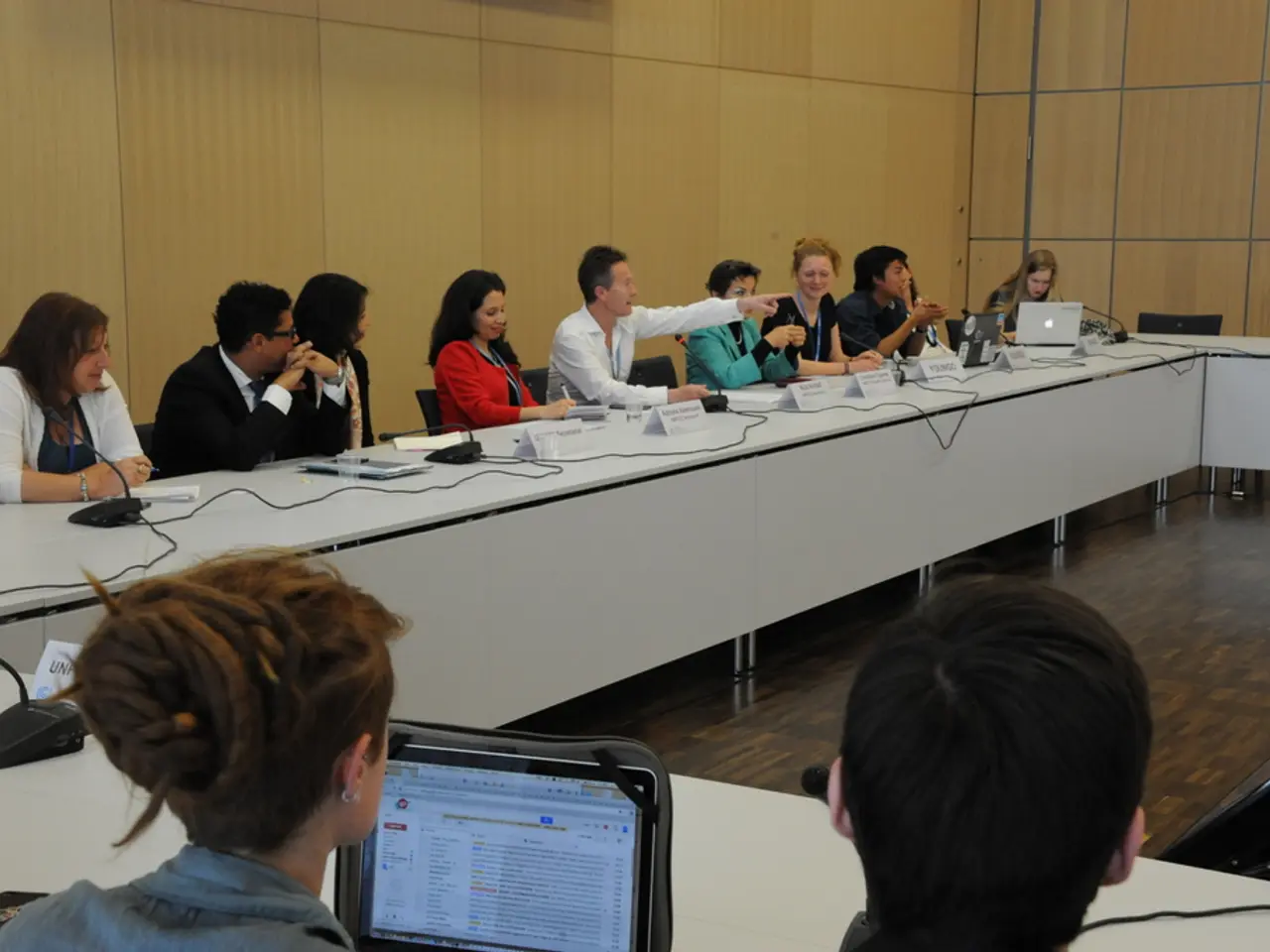Artificial Intelligence Threatening Confidence in Workplace Relations
In the realm of workplace communication, the use of artificial intelligence (AI) is a topic that continues to spark debate. A recent investigation has revealed that while AI can offer benefits, it can also pose challenges to trust and authenticity between managers and employees.
Many employees perceive AI-generated content as a sign of carelessness or disinterest. Researchers advise using AI judiciously in leadership communication, considering the purpose of the message, the extent of technological support, and the closeness of the relationship. The use of AI can undermine the perception of qualities associated with a leader's trustworthiness, as found in an investigation where employees considered leaders who heavily rely on AI for writing to be less credible.
Transparency about AI use is crucial in mitigating trust issues. Organizations that openly declare when AI assists in messaging are perceived as honest, which can enhance trust because employees appreciate the openness and human oversight involved. Low or moderate AI assistance, such as grammar corrections or lightly assisted drafting, tends to be acceptable and does not significantly harm credibility, while still improving professionalism.
Authenticity in communication also depends on alignment between leaders’ words and actions. If AI is used in communications that contradict underlying organizational behaviours, authenticity and trust break down quickly. Thus, authenticity is about a real connection reflected in candid dialogue, showing vulnerability, and being genuine in messaging beyond polished AI outputs.
Some views suggest that AI can mimic cognitive empathy—the ability to understand another’s perspective—but cannot genuinely share or act on emotional understanding. This limitation reinforces why purely AI-generated messages may feel hollow to recipients.
In summary, AI use in workplace communication:
- High undisclosed AI use tends to harm trust and authenticity by appearing insincere or disengaged.
- Transparency about AI assistance can preserve or even enhance trust.
- Light AI support (editing, grammar) is generally accepted and can improve message quality without loss of authenticity.
- Authentic communication requires human involvement that reflects genuine care and alignment with actions.
- Employees remain sensitive to cues that distinguish human from AI-generated communication, especially in relational contexts.
Therefore, to maintain trust and authenticity, leaders should use AI as a tool under clear transparency, focusing on messages where human empathy and genuine connection matter most, not replacing the human voice entirely. AI can benefit emails about organizational issues, scheduling appointments, or factual announcements, but messages aimed at empathy, praise, or individual feedback are best crafted personally.
Nina Draese, a freelance journalist specializing in automobiles, energy, climate, AI, technology, and the environment, has delved into this topic, providing insights into the intricate dynamics of AI in leadership communication. Draese has worked for various publications, including the dpa, BMW's press department, the Autozeitung, and the MAV-Verlag.
- In the context of leadership communication, excessive use of AI can harm trust and authenticity by appearing insincere or disengaged to employees.
- Transparency about the use of AI in workplace communication can help preserve or even enhance trust, as openness demonstrates human oversight and honesty.
- Moderate AI support, such as grammar corrections or lightly assisted drafting, can improve message quality while still allowing authenticity to remain intact.
- To maintain trust and authenticity, leaders should use AI as a tool but prioritize personal touch in messages that involve empathy, praise, or individual feedback, where human empathy and genuine connection matter most.
(This summary is based on the given text about AI use in workplace communication and the role of Nina Draese, a freelance journalist who specializes in topics related to AI, technology, and the environment.)




